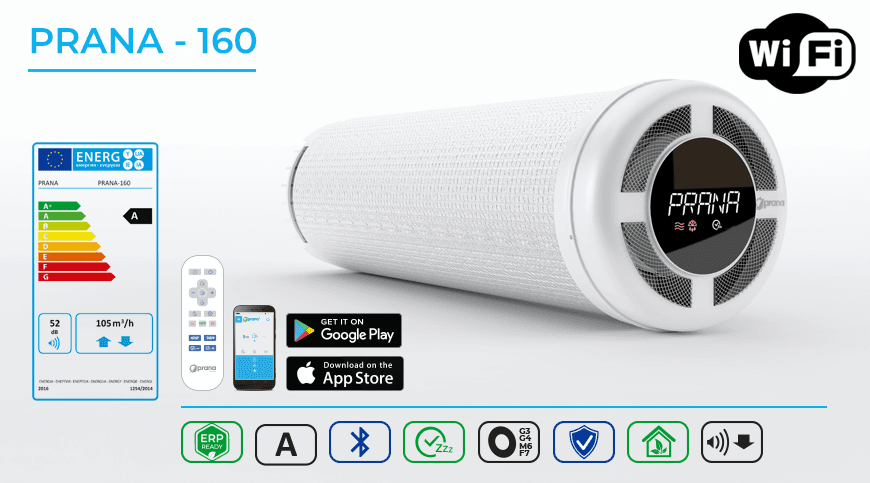In the modern era of construction and home design, the emphasis on energy efficiency and indoor air quality has never been more pronounced. Decentralised Mechanical Ventilation with Heat Recovery (dMVHR) systems have emerged as a leading solution, offering both energy savings and improved air quality. This article delves deep into the mechanics, benefits, and applications of dMVHR systems.
1. Understanding dMVHR Systems
dMVHR Explained:
Decentralised Mechanical Ventilation with Heat Recovery, commonly abbreviated as dMVHR, is an innovative ventilation system designed to provide controlled air exchange in individual rooms or zones within a building. Unlike centralised systems, which manage air for the entire building from a single point, dMVHR systems operate on a room-by-room basis, ensuring optimal air quality and energy efficiency.
How It Works:
The primary function of a dMVHR system is twofold: extracting stale air from inside and drawing fresh air from outside. As this exchange happens, the system recovers heat from the outgoing air and uses it to pre-warm the incoming fresh air. This heat exchange process ensures that minimal energy is wasted, leading to significant energy savings.
Components and Installation:
A typical dMVHR unit is compact and can be discreetly installed within walls, with only a small vent and control panel visible. The installation process is straightforward, often taking just a few hours. Once in place, the unit can be easily managed via smart controls or even smartphone applications.
Advantages Over Traditional Systems:
Traditional ventilation systems, especially in larger buildings, can be energy-intensive and less efficient in maintaining consistent air quality across different rooms. In contrast, dMVHR systems offer precise control over air exchange rates, ensuring that each room receives the right amount of fresh air based on its occupancy and use.
2. Benefits of dMVHR Systems
Enhanced Air Quality:
One of the standout features of dMVHR systems is their ability to improve indoor air quality. By continuously replacing stale indoor air with fresh outdoor air, these systems effectively filter out pollutants, allergens, and odours.
Energy Efficiency:
The heat recovery aspect of dMVHR systems is a game-changer. By recovering and reusing heat, these systems reduce the energy required to warm incoming air, leading to substantial energy savings and reduced heating bills.
Humidity Control:
dMVHR systems excel in controlling indoor humidity levels. They effectively extract moisture from areas prone to dampness, such as kitchens and bathrooms, replacing it with fresh, drier air. This capability helps prevent issues like mould growth and condensation.
Quiet Operation:
Noise can be a concern with traditional ventilation systems. However, dMVHR units are designed with noise-reducing features, ensuring a quiet and peaceful indoor environment.
3. Integration with Smart Home Systems
Seamless Connectivity:
Modern dMVHR units are designed to integrate seamlessly with smart home systems. Whether it’s Amazon Alexa, Google Assistant, or other smart home platforms, users can enjoy intuitive management and monitoring functions.
Automated Air Quality Management:
With smart integration, dMVHR systems can automatically adjust based on real-time air quality data. For instance, if a sensor detects elevated CO2 levels in a room, the system can increase the air exchange rate to bring in more fresh air.
Remote Monitoring:
Smartphone applications allow homeowners to monitor and control their dMVHR systems remotely. This feature is particularly useful for those who travel frequently, as they can ensure optimal air quality in their homes even when they’re away.
Future of Smart Ventilation:
As technology continues to evolve, the integration between dMVHR systems and smart home platforms will only deepen, offering users more advanced features and even greater control over their indoor environments.
4. Applications and Use Cases
Residential Buildings:
dMVHR systems are perfect for homes, especially those located in urban areas or places with poor outdoor air quality. They ensure a constant supply of fresh, filtered air, enhancing the overall living environment.
Commercial Spaces:
Offices, retail spaces, and other commercial establishments can benefit immensely from dMVHR systems. They not only ensure a pleasant environment for employees and customers but also lead to energy savings.
Educational Institutions:
Schools, colleges, and other educational institutions can maintain a healthy learning environment with dMVHR systems. They help in keeping classrooms fresh and free from pollutants.
Healthcare Facilities:
In places like hospitals and clinics, where air quality is paramount, dMVHR systems can play a crucial role. They ensure that patients breathe clean air, free from harmful pathogens and allergens.
Decentralised Mechanical Ventilation with Heat Recovery systems represent the future of ventilation. With their ability to enhance air quality, save energy, and integrate with smart home systems, they are set to become a standard feature in modern buildings. As we continue to prioritize health and sustainability, the adoption of dMVHR systems will undoubtedly rise.











